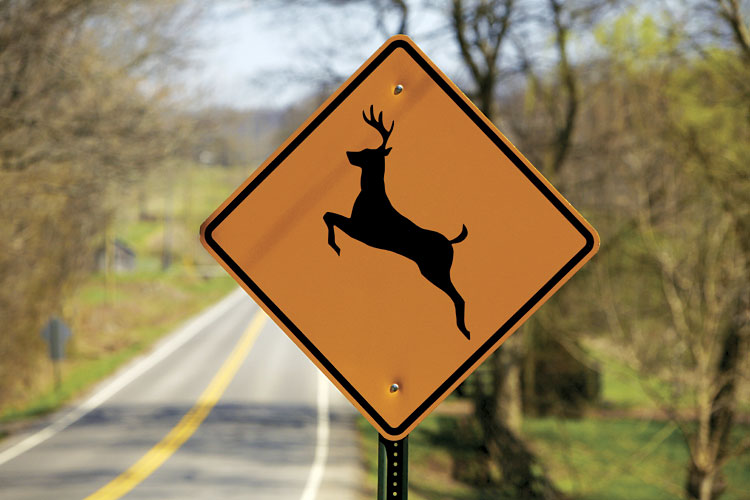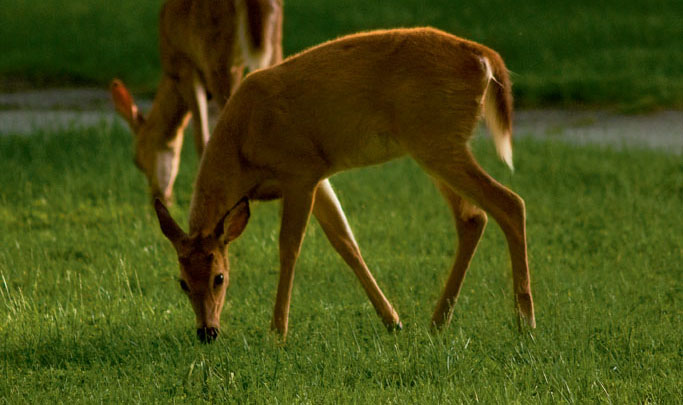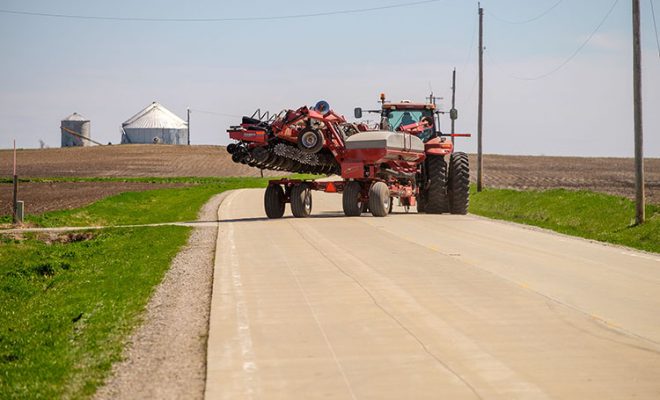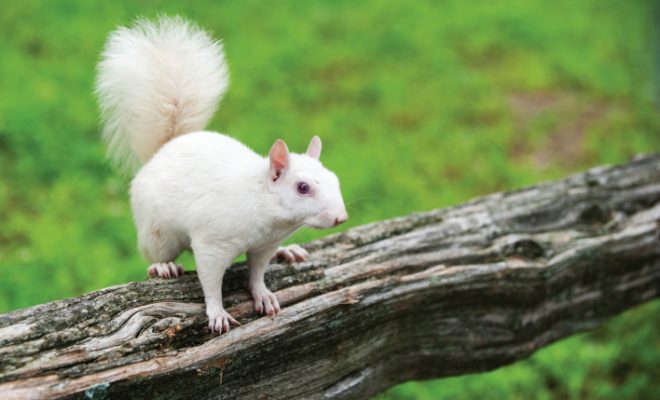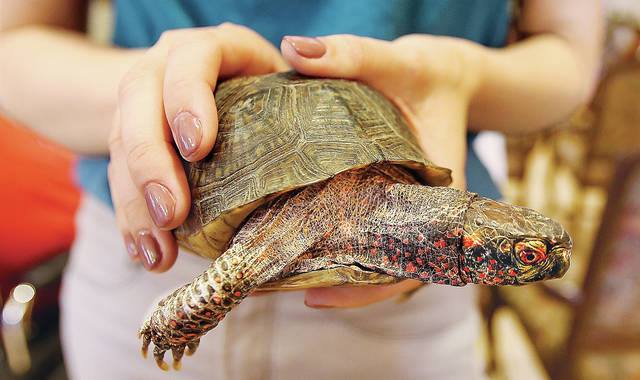Many of us have experienced it – the heart-pounding moment when a deer crosses the road just ahead of your vehicle and a collision is barely avoided.
Roughly 800,000 white-tailed deer call Illinois home, and autumn is an especially dangerous time for Illinois motorists – encounters between drivers and deer are at their peak from late October through December.
Fortunately, Illinois deer/vehicle collisions have leveled off over the past few years, even as statewide deer numbers have remained stable, according to Illinois Department of Natural Resources (IDNR) spokesman Chris McCloud.
But motorists can’t afford to be complacent while cruising the interstate; an interaction with one of Illinois’ big bucks can cause significant damage to your vehicle or your health.
Country Financial insurance company alone reported 8,604 Illinois deer/vehicle incidents in 2008, paying out nearly $23.3 million in claims at an average $2,707 in estimated damages per incident. That’s compared with 9,521 incidents in 2004.
“The most popular places for animal-human contact to occur are either the places with the most humans or the places with the most deer – not necessarily both,” McCloud relates. “For example, there’s a high rate of deer/vehicle accidents in Cook County, which seems odd to many people. Why? There certainly are quite a few deer up in that area, but there’s also two-thirds of the population of the entire state in Northern Illinois. If you have a lot of cars, you’re going to run up the chances of contacting a deer.”
He adds, “In the converse, if you go to an area in central or southern Illinois where there aren’t nearly as many people as in Cook County, there may be a lot more deer. There, you’re also going to run up the risk of running into a deer.”
McCloud notes collisions occur most frequently during the period known as the deer’s “rut,” when the hooved herbivores essentially have only two things on their mind – food and finding a mate. That cool-weather imperative distracts them from potential hazards within their immediate environment, including speeding cars.
“They move with purpose, and they move with intent,” McCloud explains.
Caution is key to minimizing ill-fated encounters with deer. Slow down in areas that deer are known to inhabit or where they may be prevalent, such as near open spaces, forested areas, harvested farm fields where deer may feast on crop residues, or creeks where animals may stop for refreshment.
“If you’ve seen them in a place once, chances are you’re going to see them again,” McCloud says. “Most of us take the same route or maybe just a couple of different routes between home and work. During the rut, those are the most crucial times – at dawn and dusk, when deer are most active.”


